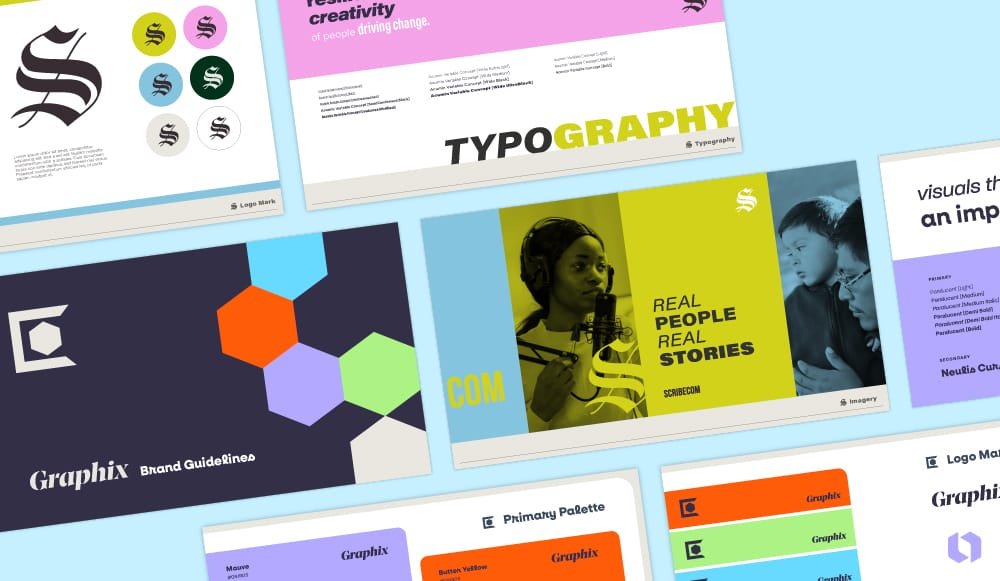Who We Are
[Organization Name] is a [type of organization/institution] founded in [year] in [location]. [Brief description of what the organization does, its mission, and key offerings]. [Add relevant statistics about size, reach, or impact]. The organization serves [target audience description] and is known for [key distinguishing characteristics].
Brand Platform
Our brand platform inspires messaging that is uniquely ours: [core brand essence/word].
More than a logo or tagline, our brand platform establishes the brand foundation from which all marketing decisions are made. If a message falls outside our brand promises, it’s probably not worth telling.
Promise to Make it [Brand Essence]
[Brand Essence] people
- [stakeholder group 1]
- [stakeholder group 2]
- [stakeholder group 3]
- [target audience]
[Brand Essence] opportunities
- [key offering 1]
- [key offering 2]
- [unique advantage 1]
- [unique advantage 2]
[Brand Essence] experiences
- [experience type 1]
- [experience type 2]
- [experience type 3]
- [experience type 4]
Brand Attributes
Brand attributes are characteristics that speak to the personality of the brand.
- [Attribute 1] – [brief description]
- [Attribute 2] – [brief description]
- [Attribute 3] – [brief description]
- [Attribute 4] – [brief description]
Differentiators
Differentiators are enduring features that separate us from competitors.
We celebrate [unique positioning]:
- [Differentiator 1]
- [Differentiator 2]
- [Differentiator 3]
- [Differentiator 4]
- [Differentiator 5]
Brand Stories
Focus on the journey—not just outcomes. Show what daily life looks like for your audience. Demonstrate processes, showcase behind-the-scenes moments, and highlight what makes your organization special.
Share stories that are:
- Compelling – emotionally engaging
- Current – timely and relevant
- Bite-sized – easily digestible
- Relatable – connects with audience
- More than Features and Benefits – goes beyond facts to emotion
Features vs Benefits vs Stories
- Feature: A factual statement about a product or service
- Benefit: Answers “What’s in it for me?”
- Story: Real, emotive narratives that connect emotionally
Our messaging centers on authentic brand stories rather than just features and benefits.
Tone of Voice
[Primary tone descriptor].
This is how we say what we say—and it’s essential that all communications consistently share our trademark tone of voice.
[Primary tone] Means…
[Sub-descriptor 1]. [Sub-descriptor 2]. [Sub-descriptor 3]. [Sub-descriptor 4].
- Use [writing style guidelines]
- Avoid [things to avoid]
- [Additional voice guidance]
Power Statements
Memorable phrases that can be used in headlines, subject lines, social media, and body copy.
- [Topic 1]—[Powerful statement about this area]
- [Topic 2]—[Powerful statement about this area]
- [Topic 3]—[Powerful statement about this area]
- [Topic 4]—[Powerful statement about this area]
Frequently Used Words
Simple, active words and verbs that create energy and urgency.
- [Action word 1]
- [Action word 2]
- [Action word 3]
- [Action word 4]
- [Action word 5]
- [Action word 6]
- [Action word 7]
- [Action word 8]
- [Action word 9]
- [Action word 10]
Visual Identity
Logo System
Full Name Logo
- Full-Name Horizontal: [Description of when to use]
- Full-Name Stacked: [Description of when to use]
- Full-Name Wordmark: [Description of when to use]
When to Use: Use full name variations when brand recognition is low or in formal contexts.
Abbreviated Logo
- [Abbreviated] Vertical: [Description]
- [Abbreviated] Horizontal: [Description]
- [Abbreviated] Wordmark: [Description]
When to Use: Use abbreviated versions only when the full organization name appears elsewhere.
Icon/Symbol
When to Use: Use only when organization name is present elsewhere or in internal communications.
Logo Usage Guidelines
Clear Space
- Maintain [measurement] of clear space around logo
- Keep area free of all other graphics, text, and logos
Minimum Size Restrictions
- Full-name horizontal logos: minimum [measurement] tall
- Abbreviated wordmark: minimum [measurement] wide
- Contact [department] with size questions
Unacceptable Applications
Do NOT:
- Recreate or modify the logo
- Change colors
- Stretch or distort
- Make transparent
- Move logo elements
- Tilt or rotate
- Mix logo variations
- Use web logos for print
Color Variations
- White logo: Use on dark backgrounds
- Black logo: Use on light backgrounds
- Full-color logo: Use on white/neutral backgrounds
- [Brand color] logo: Use on contrasting backgrounds
Logo on Photography
- Use full-color on light photos
- Use white/light version on dark photos
- Never place over people or complex focal points
- Use designer judgment for placement
Organization Seal
When to Use: Formal and official documents only. Not for general use or apparel. May not be altered or blended with other designs.
Color Palette
Primary Palette
[Primary Color Name]
- PMS: [number]
- CMYK: [values]
- RGB: [values]
- HEX: [code]
[Secondary Color Name]
- PMS: [number]
- CMYK: [values]
- RGB: [values]
- HEX: [code]
Secondary Palette
Additional colors for publications that maintain cohesive branding.
[Color 1 Name]
- PMS: [number]
- CMYK: [values]
- RGB: [values]
- HEX: [code]
[Color 2 Name]
- PMS: [number]
- CMYK: [values]
- RGB: [values]
- HEX: [code]
[Color 3 Name]
- PMS: [number]
- CMYK: [values]
- RGB: [values]
- HEX: [code]
Typography
Primary Font Family
[Font Name]—Primary sans-serif/serif typeface for [usage description].
Secondary Print Font
[Font Name]—[Description of when and how to use].
Primary Web Font
[Font Name]—Primary web font for [usage description].
Typography Hierarchy
- Headline: [Font, size, weight]
- Subheading: [Font, size, weight]
- Body Copy: [Font, size, weight]
- Caption: [Font, size, weight]
Department/Division Identifiers
Usage Guidelines
While the main logo system is available to all departments, unique identifiers may include department names with the organization logo.
- Vertical Identifier: [When to use]
- Horizontal Identifier: [When to use]
Unacceptable Applications
- Do not recreate identifiers
- Do not change colors
- Do not stretch or realign
- Do not move elements
- Use only official versions
Photography Guidelines
What Makes Our Photos Authentic?
- Shots are natural, not staged
- Show real people doing real work
- Capture authentic moments and environments
- Avoid artificial filters and effects
- Shoot from natural eye level
- Subjects don’t always look at camera
Photo Subjects Should Highlight:
- [Key theme 1]
- [Key theme 2]
- [Key theme 3]
- [Environmental context]
- [Activity/action]
Videography Guidelines
What Makes Our Videos Authentic?
- Shot on location where work happens
- Camera follows action, not static shots
- Use natural light when possible
- Feature authentic voices and stories
- Show passion and conviction
- Capture real environments and culture
Videos Should Highlight:
- [Organizational culture/environment]
- [Passion for mission/work]
- [Unique identity and positioning]
- [Geographic/physical context]
- [Community and relationships]
Implementation Notes
This brand guide should be:
- Shared with all team members
- Referenced for all external communications
- Updated periodically to stay current
- Used as training material for new staff
- Applied consistently across all touchpoints
Contact [Brand Management Team/Department] with questions about brand implementation.

